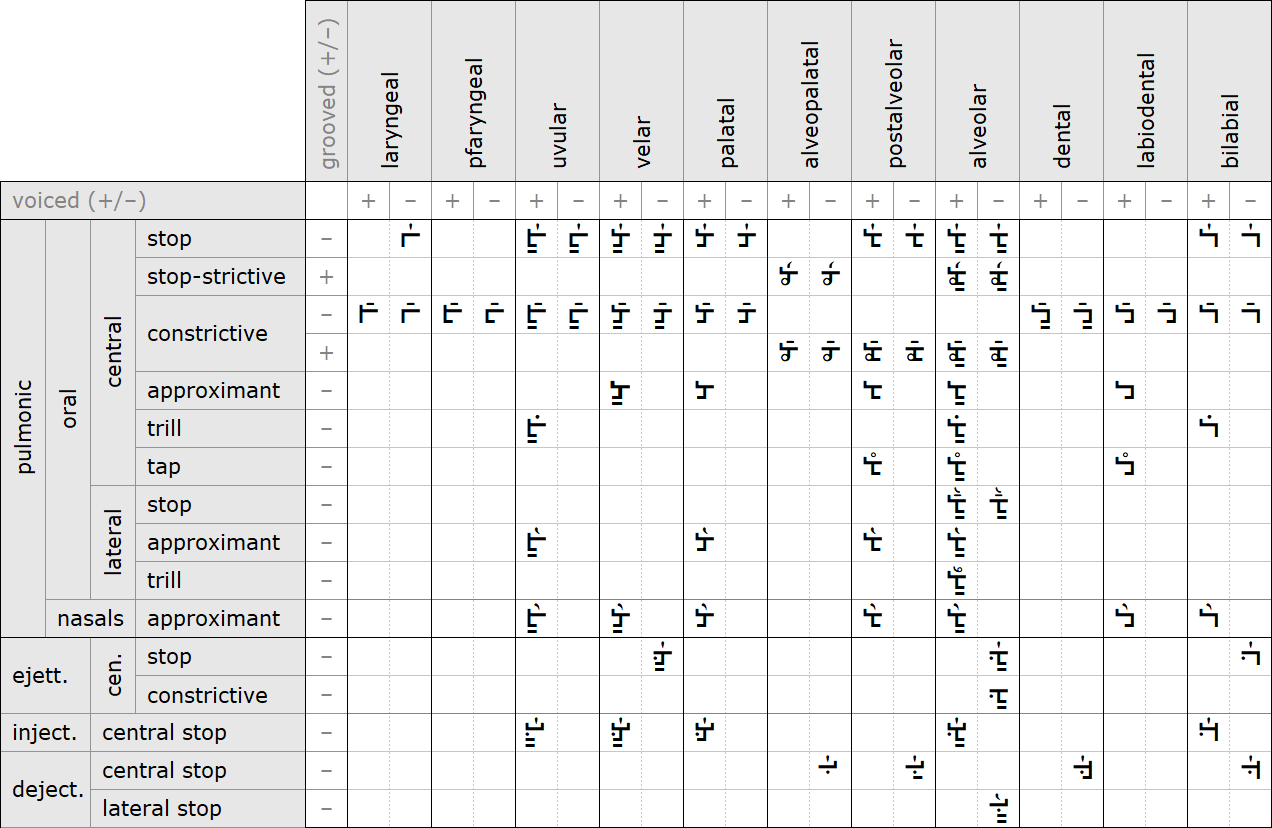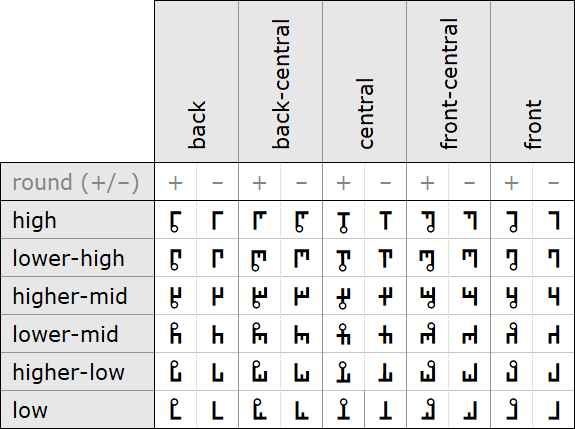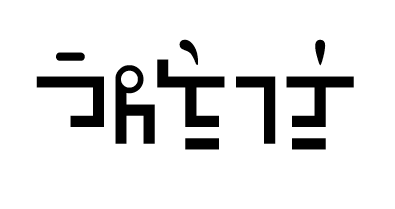Fonic
Fonic is a phonetic alphabet with a phonoanalogic and phonosymbolic structure, which can be used both in the academic sphere, for the precise phonetic transcription of the phones of all languages of the world, and as an alternative writing system to the current national alphabets. The Fonic alphabet was conceived in 1991 by Andrea Vaccari, who completed its realization in 2018. Version 2.0 was then released in February 2021. The history, development and structure of the Fonic alphabet are illustrated in detail in the book Fonic - Un alfabeto fonoanalogico e fonosimbolico[1].
Description
Fonic is a phonoanalogic and phonosymbolic writing system, simple and intuitive, modular and expandable, designed to allow the precise phonetic transcription of historical-natural languages and facilitate the adequate oral reproduction of foreign languages, thus reducing the pronunciation errors of unknown words. Fonic can be used both in the academic sphere, for the precise phonetic transcription of the phones of all languages of the world, and as an alternative writing system to the current national alphabets, as it implements several types of rules, called implosions, to facilitate the writing of individual languages. Fonic differs from the International Phonetic Alphabet (IPA) mainly for its phonoanalogic-based structure, consisting of symbols whose main features visually represent the parameters of the phonic production, and partly phonosymbolic, for the features that instead describe them conventionally, without being a true representation of them. The phonoanalogic quality of the graphs allows an intuitive learning, which develops sensitivity towards phono-articulatory phenomena, the modular structure facilitates the coding of more complex phones and the expandability allows the easy expansion and updating of the alphabet according to new needs. Furthermore, its symbols do not derive from any existing alphabet, unlike those of the IPA, which are taken or derived primarily from the Latin and Greek alphabets.
History
Fonic was conceived as a phonoanalogic alphabet, in the sense that its development began, trying to use graphic traits that could remember the production parameters of the phones they represented. But a total correspondence of this type is difficult to build in compliance with the principle of efficiency of a writing system, which is one of the most important conditions for an alphabet to be effectively used. The phonoanalogic representation was therefore extended to the limit within which the writing system was still simple enough to allow easy use, beyond which a phonosymbolic approach was instead used, i.e. using graphic traits that conventionally described the parameters of the phonic production. An attempt to create a phonoanalogic alphabet was made for educational purposes by Hermann Gutzmann in 1894 [2], without however having much luck.
Versions
The Fonic alphabet did not undergo any fundamental structural change from 2018 until February 2021, in which version 2.0 was released, which differs from the previous ones in three main aspects:
- The contoidal constrictive phones now have the constrictive trait, which was previously considered the default value for the articulatory mode, while now the default value has been attributed to the approximant mode, not so much because there are more approximants than constrictvs, but because the absence of a free trait for the articulatory mode is phonoanalogically more compliant with the approximant mode, in which there is no occlusion or friction, compared to the constrictive one, in which there is friction. The approximant tract obviously remains present in geminated phones and implosions.
- The representation of non-pulmonic phones has been simplified, thus allowing easier reading and writing of the symbols.
- The number of main vocoids has been reduced to 60 in accordance with those of the CanIPA alphabet.
Symbols
With regard to terminology, we prefer to use here the terms contoids and vocoids, instead of consonants and vowels, because they are more exact from the articulatory point of view, as some contoids can assume vowel function in certain contexts, such as the contoid [l] in the English word table [ˈtʰeɪbl̩]. In practice the terms contoids and vocoids refer to the articulatory characteristic of the phones, while consonants and vowels to their practical realization in a certain context.
Contoids
With regard to contoids, we use the terms constrictive and stop-strictive instead of fricative and africate, because these are terms of auditory phonetics and not of articulatory phonetics[3].
Graphs
The contoidal graph consists of a central horizontal line (called contoidal line), which divides it into two parts (called lower part and upper part). In the lower part are represented 1) the place of articulation (laryngeal, pharyngeal, uvular, velar, palatal, alveopalatal, postalveolar, alveolar, dental, labiodental, bilabial), 2) the air outlet channel (oral, nasal), 3) the active organ (bilabial, linguolabial, labiodental, dental), 4) the part of the active organ (apical, laminal, predorsal, (mid)dorsal, postdorsal), 5) the path of the air flow (central, lateral) and 6) the shape of the active organ (lowered, raised, grooved, rounded).
In the upper part are represented 1) the direction of the air flow (egressive, ingressive), 2) the phonation (voiced, breathy voiced, creaky voiced, voiceless), 3) the manner of articulation (plosive, africate, fricative, approximant, trill, tap, flap), 4) the air outlet channel (oral, nasal), 5) the path of the air flow (central, lateral), 6) the source of the air flow (pulmonic, non-pulmonic (ejective, implosive, clicks)) and 7) the phone duration (simple, geminated). As we can see, the air outlet channel and the path of the air flow can be represented both in the lower and in the upper part.
The vertical segment attached to the lower part of the contoidal line is called contoidal index and the horizontal segment attached to the lower end of the contoidal index is called contoidal coindex, which can be simple or double. The contoidal index and coindex have the function of representing the place of articulation of contoid. The traits of various shapes that are located in the upper part of the graph and are not attached to it, are called free traits and can represent 1) the air outlet channel, 2) the path of the air flow, 3) the manner of articulattion and 4) the phone duration. Gemination is represented by doubling the free trait.
Pulmonic contoids
Pulmonic contoids are produced by the air flow generated by lungs, are also the most common and there is a greater variety of them. The partition of the contoids in the following table is different from that of the IPA, because the pulmonic contoids are firstly divided into oral and nasal depending on the air outlet channel, and the oral ones into central and lateral according to the shape of the path of the air flow. Furthermore, the contoids that in the IPA are defineed as stops with nasal release are here defined as nasal stops and the contoids that in the IPA are defined as stops with lateral release are here defined as lateral stops. Therefore the nasal and lateral features are not considered as a manner of articulation as in the IPA, but as two separate categories, each containing contoids which can be articulated in different ways. The manner of articulation of nasal contoids can be plosive or approximant and the one of lateral contoids can be plosive, africate, fricative, approximant or tap.
Non-pulmonic contoids
Pulmonic contoids are the most widespread ones, but there are also non-pulmonic contoids, which are not present in the so-called Standard European Languages, and many of them are difficult enough to be reproduced in a linguistic context by people who have not learned to pronounce them since childhood. The non-pulmonic contoids can be produced in three different ways: 1) by the compressed air that is created between the glottal occlusion and that of the other place of articulation (ejective), 2) by the depressed air that is created in the same cavity (implosive), or 3) by the depressed air that is created between the velar occlusion and that of the other place of articulation (clicks). The clicks are particularly interesting, because some of them are commonly used by everyone with specific communicative functions, without knowing that in some languages they perform the function of simple consonants. Certainly the most common is the bilabial diective [ʘ], which simply corresponds to the sound of a kiss, while the postalveolar delective [ǃ] is the one that is used repeatedly to attract the attention of cats.
In the contoids table we inserted for simplicity only the symbols that correspond to those of the IPA contoids table, although it would theoretically be possible to fill the entire table with all the symbols, regardless of whether they actually exist in some language of the world and regardless of whether they are pronounceable or not.

Contoids (Fonic 2.0)
|
Vocoids
Vocoids can be subdivided into rounded and unrounded. The term rounded refers to the shape of the lips, which in the production of some vocoids are rounded and normally also protruding outwards, while in the production of other vocoids they are relaxed. The vocoids are classified in the following tables according to the height and depth of the top of the tongue with respect to the palate, according to which it is possible to divide the vocoids respectively into high and low (height) and into anterior and posterior (depth).
Graphs
The vocoidal graph is made up of a vertical line (called vocoidal line), to which is attached a horizontal line (called vocoidal index), to which another vertical line can be attached (called vocoidal coindex), which can be simple or double. The vocoidal index and coindex have the function of representing the height and depth of a vocoid. A circle (called vocoidal ring), whose function is to represent rounded vocoids, can be attached to the vocoid line.
In the table of vocoids, unlike that of the contoids, we inserted all the possible symbols, to give an overview of how all the vocoidal symbols are composed.

Vocoids (Fonic 2.0)
|
Notes
- ^ Andrea Vaccari, Fonic - Un alfabeto fonoanalogico e fonosimbolico, Amazon Publishing, 2018, ISBN 9781730703010.
- ^ Hermann Gutzmann: Eine neue phonetische Schrift, Monatsschrift für Sprachheilkunde 1894.
- ^ Canepari, p. 60, § 4.5.
Bibliography
- Andrea Vaccari, Fonic - Un alfabeto fonoanalogico e fonosimbolico, Amazon Publishing, 2018, ISBN 9781730703010.
- Andrea Vaccari, Imparare il Fonic - Passo dopo passo e una lettera alla volta, Amazon Publishing, 2019, ISBN 9781094954707.
- Hermann Gutzmann: Eine neue phonetische Schrift, Monatsschrift für Sprachheilkunde 1894.
- Luciano Canepari: Avviamento alla Fonetica, Einaudi Editore, Torino, 2006, ISBN 8806179780.
